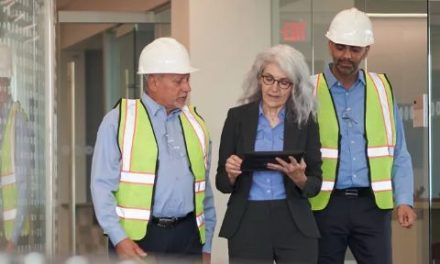IT software developers are keeping a close eye on the Internet of Things (IoT). It’s impossible to tell if IoT will live up to the hype, but what’s clear is that it will have a considerable impact on the way we do business.
The Internet of Things means everything is connected. If you consider that a ‘thing’ could be virtually any device – from a coffee machine to a car – then it’s not difficult to imagine just how revolutionary this could be for industry.
In manufacturing this interconnecting of digital and mechanical worlds is being dubbed ‘smart manufacturing’ or the ‘industrial internet’. In Germany it’s called Industry 4.0 or ‘the fourth industrial revolution’ and was initiated as a project within the German government’s strategy to promote high-tech growth. The goal is to create intelligent networks along the entire value chain, which can control each other autonomously.
Siemens is already investing in R&D for technology that is part of this revolution. The company envisages a factory where every piece of technology talks to the other. The result might be a newly built vehicle communicating with the factory where it was built. So, if the vehicle had a fault, it could not only self-diagnose the problem, but also tell the factory the part that needs to be made to repair or replace the damaged component.
Within the factory itself, IoT could lead to the creation of assembly lines that are never affected by downtime. Maintenance work would be scheduled to an exact point in time, and spare parts would arrive even before a replacement was necessary. The result would be no more warning lights that flash only after there has been an error or after a part has exceeded its useful life. Factory workers are also set to benefit from IoT. Wearable tech, which is just beginning to gain traction in the consumer space, could also be used by industry workers. For example, health and safety could be improved with devices to measure noise exposure or ambient temperature, with alerts to warn workers if they risk being harmed.
The possibilities offered by this revolution are tremendous, but there are also challenges. One of the biggest tasks will be to integrate a large and diverse group of ‘things’ – whatever they may be – into the existing network structure. Then there’s the data to consider. It will need to be added to the central IT system and then processed, analysed and displayed in such a way that it can be acted on. The IT network will be the nerve centre of it all, needing careful attention to ensure its smooth running.
Network monitoring will assume an important role in the Internet of Things. Traditionally used to monitor the network on which everything runs, network monitoring can help by detecting faults before they impact performance. Say the software crashes, or one of the devices on the network gets disconnected, network monitoring acts as an early warning system. However, with IoT it has the potential to offer much more – to monitor the actual ‘things’ on the network so that you always know the status of the many devices connected to your network at any given time. It can also act as a control centre or dashboard that brings together traditional IT and, in this case, industrial machines. We call this the ‘Monitoring of Things’.
There is no doubt that the promise of IoT is great, but its success will largely depend on managing and monitoring the networks on which it will depend and, critically, the ‘things’ themselves. Network monitoring is one tool that can help, enabling manufacturers to secure the many benefits of this next wave in manufacturing and turning the promise of Industry 4.0 into a reality.
Dirk Paessler is CEO of Paessler, a networking monitoring software developer based in Nuremburg, Germany.


